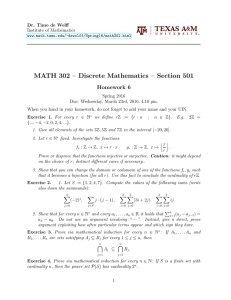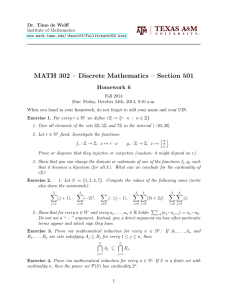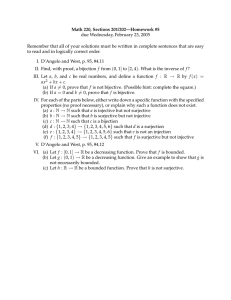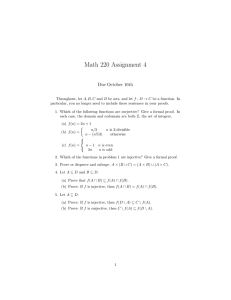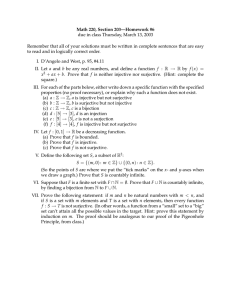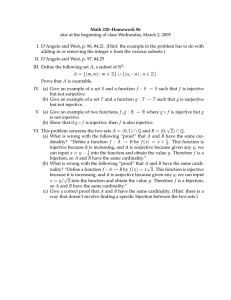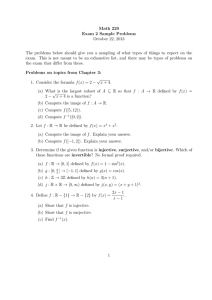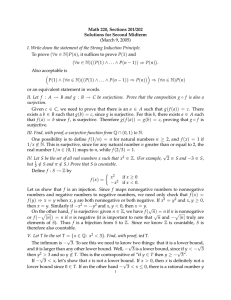Math 220, Section 203—Homework #7
advertisement
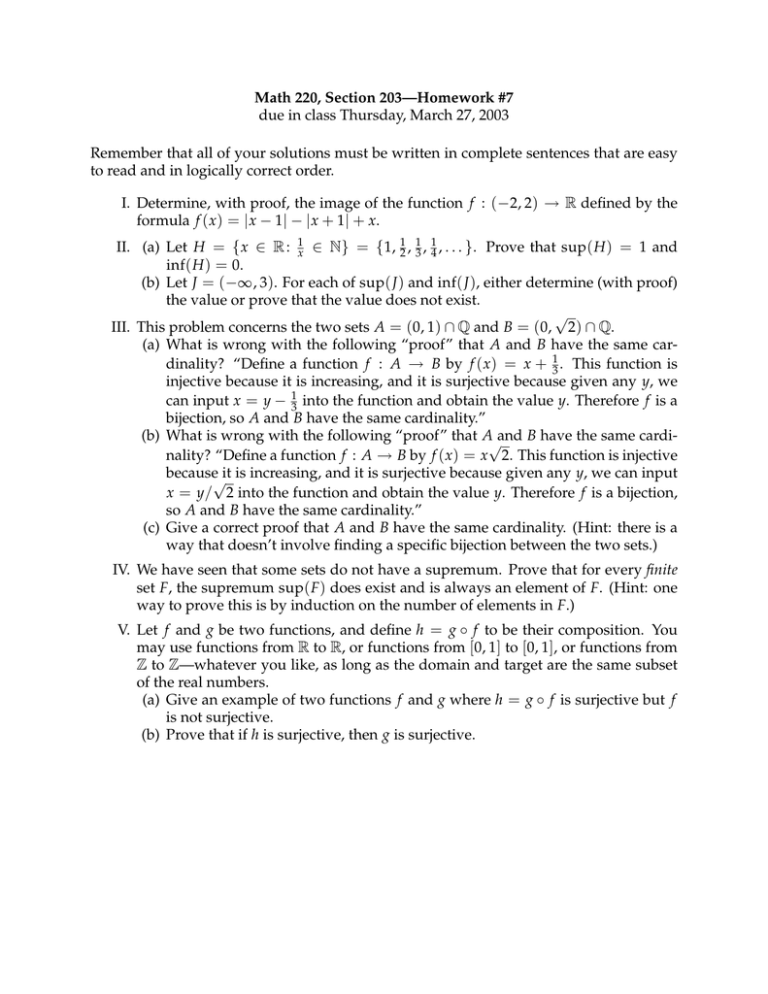
Math 220, Section 203—Homework #7
due in class Thursday, March 27, 2003
Remember that all of your solutions must be written in complete sentences that are easy
to read and in logically correct order.
I. Determine, with proof, the image of the function f : (−2, 2) → R defined by the
formula f ( x) = | x − 1| − | x + 1| + x.
II. (a) Let H = { x ∈ R : 1x ∈ N} = {1, 12 , 13 , 14 , . . . }. Prove that sup( H ) = 1 and
inf( H ) = 0.
(b) Let J = (−∞, 3). For each of sup( J ) and inf( J ), either determine (with proof)
the value or prove that the value does not exist.
√
III. This problem concerns the two sets A = (0, 1) ∩ Q and B = (0, 2) ∩ Q.
(a) What is wrong with the following “proof” that A and B have the same cardinality? “Define a function f : A → B by f ( x) = x + 31 . This function is
injective because it is increasing, and it is surjective because given any y, we
can input x = y − 13 into the function and obtain the value y. Therefore f is a
bijection, so A and B have the same cardinality.”
(b) What is wrong with the following “proof” that A√and B have the same cardinality? “Define a function f : A → B by f ( x) = x 2. This function is injective
because√it is increasing, and it is surjective because given any y, we can input
x = y/ 2 into the function and obtain the value y. Therefore f is a bijection,
so A and B have the same cardinality.”
(c) Give a correct proof that A and B have the same cardinality. (Hint: there is a
way that doesn’t involve finding a specific bijection between the two sets.)
IV. We have seen that some sets do not have a supremum. Prove that for every finite
set F, the supremum sup( F ) does exist and is always an element of F. (Hint: one
way to prove this is by induction on the number of elements in F.)
V. Let f and g be two functions, and define h = g ◦ f to be their composition. You
may use functions from R to R, or functions from [0, 1] to [0, 1], or functions from
Z to Z—whatever you like, as long as the domain and target are the same subset
of the real numbers.
(a) Give an example of two functions f and g where h = g ◦ f is surjective but f
is not surjective.
(b) Prove that if h is surjective, then g is surjective.
